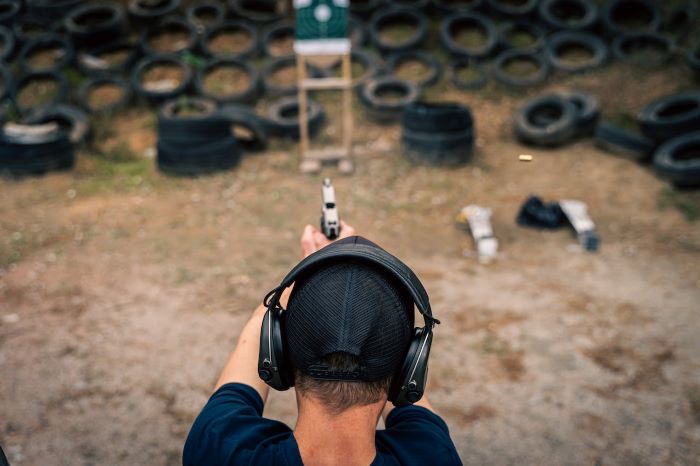Customizing a pistol is not just about personalizing an object; it’s about enhancing performance, comfort, and accuracy. Whether you’re a competitive shooter, a law enforcement officer, or a firearm enthusiast, tailoring your pistol to fit your needs can significantly improve your shooting experience. Here we will discuss the various aspects of pistol customization, focusing on grips and sights, two critical components that can dramatically affect a firearm’s functionality.
Grips: Enhancing Comfort and Control
The grip of a pistol is the primary point of contact between the shooter and the firearm. A proper grip can improve control, reduce recoil, and increase accuracy. Custom grips are available in various materials, including wood, rubber, and polymer. Each material offers different benefits:
- Wood Grips: Often chosen for their aesthetic appeal, wood grips can also provide a comfortable, warm feel. They are available in various hardwoods and can be custom carved for a unique look.
- Rubber Grips: These grips are known for their ability to absorb recoil and provide a non-slip surface, even in wet conditions. They are ideal for shooters who require a firm grip and reduced hand fatigue.
- Polymer Grips: Lightweight and durable, polymer grips are often used in modern tactical pistols like the GLOCK G26. They can be textured for improved grip and are resistant to oils and solvents.
Custom grips can also be tailored to the size of the shooter’s hand. For those with smaller hands, slimmer grips can make a significant difference in handling and control. Conversely, shooters with larger hands might prefer thicker grips for a more comfortable hold.
Sights: Aiming for Precision
Sights are critical for accurate shooting. Upgrading from standard factory sights to custom options can enhance a shooter’s ability to aim quickly and accurately. There are several types of sights to consider:
- Iron Sights: These are the most common and consist of a notch (rear sight) and a post (front sight). Upgrading iron sights can involve adjusting their size, shape, or color for better visibility and faster target acquisition.
- Fiber Optic Sights: These sights use a piece of fiber optic material to capture and funnel natural light, creating bright sight points. They are particularly effective in low-light conditions and for quick target acquisition.
- Tritium Sights: These are self-illuminating, using small amounts of radioactive tritium to create glow-in-the-dark points. Tritium sights are invaluable for low-light or nighttime conditions.
- Red Dot Sights: A more advanced option, red dot sights project a red dot onto a lens, which the shooter aligns with the target. These sights allow for rapid target engagement and are popular in competitive shooting and tactical applications.
Installation and Safety
When customizing a pistol, it’s crucial to ensure that modifications do not interfere with the firearm’s safety or reliability. Installation of custom grips is usually straightforward and can often be done at home with basic tools. However, installing new sights, especially advanced options like red dot sights, may require professional gunsmithing to ensure proper alignment and functionality.
Legal Considerations
Before customizing a firearm, it’s important to be aware of local laws and regulations. Some modifications may not be legal in certain jurisdictions, or they might require specific permits.
Conclusion:
Customizing your pistol with the right grips and sights can transform your shooting experience. It’s about finding the perfect balance between aesthetics, comfort, and performance. Whether it’s the tactile feel of a new grip or the precision of a finely tuned sight, these modifications can make a significant difference in how you interact with your firearm. Remember, the goal is to create a pistol that feels like an extension of yourself, enhancing both your skill and your enjoyment of the shooting sports.

